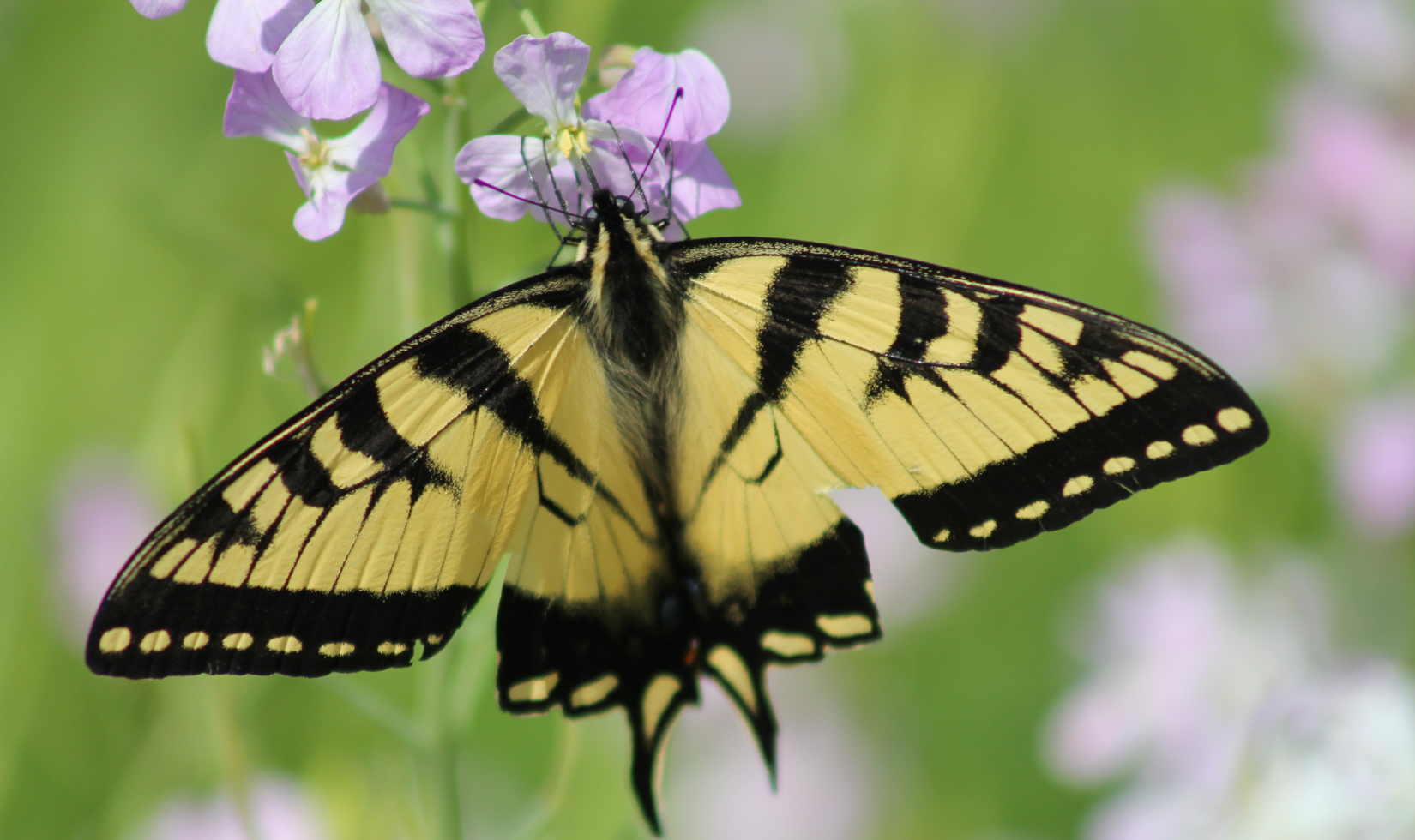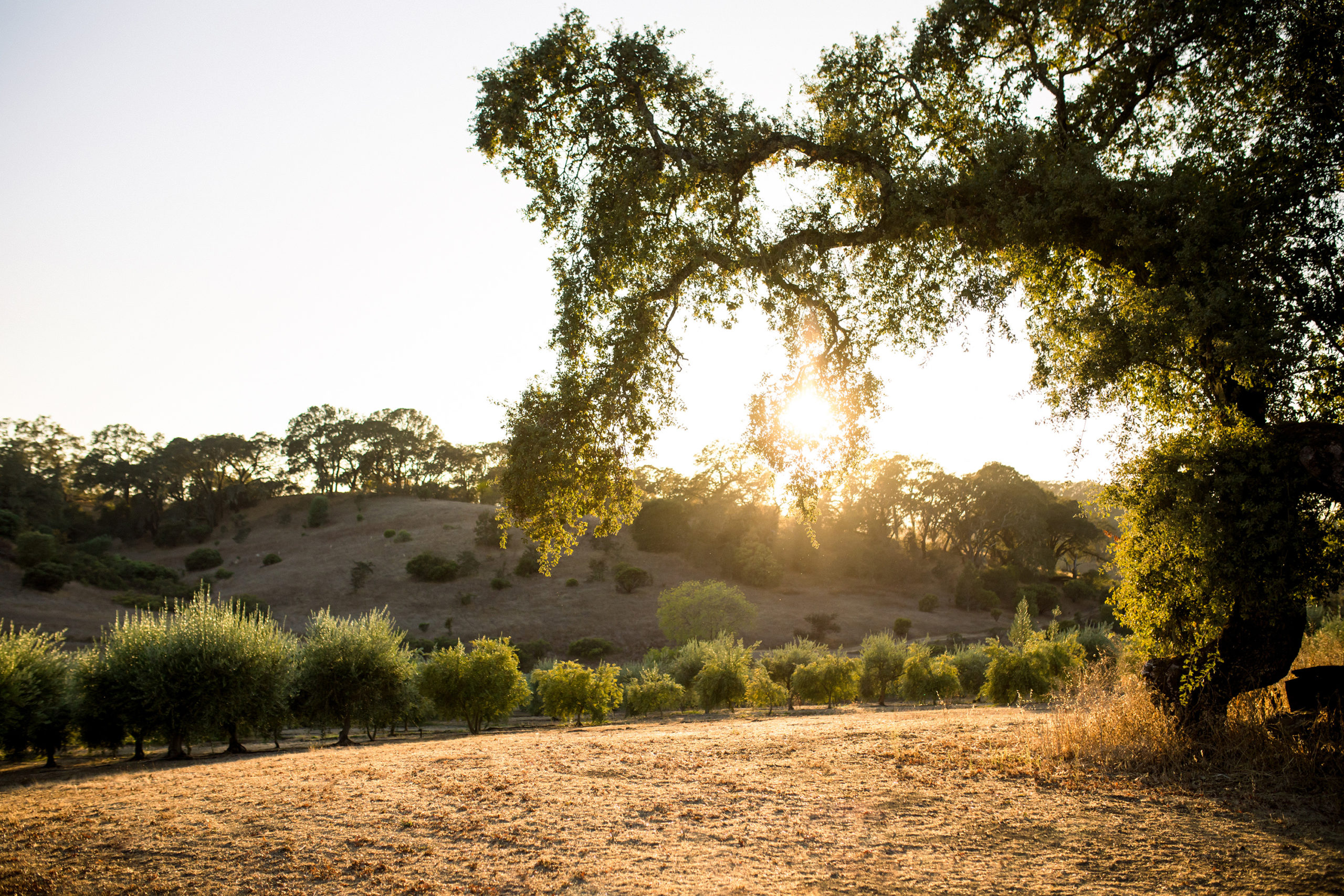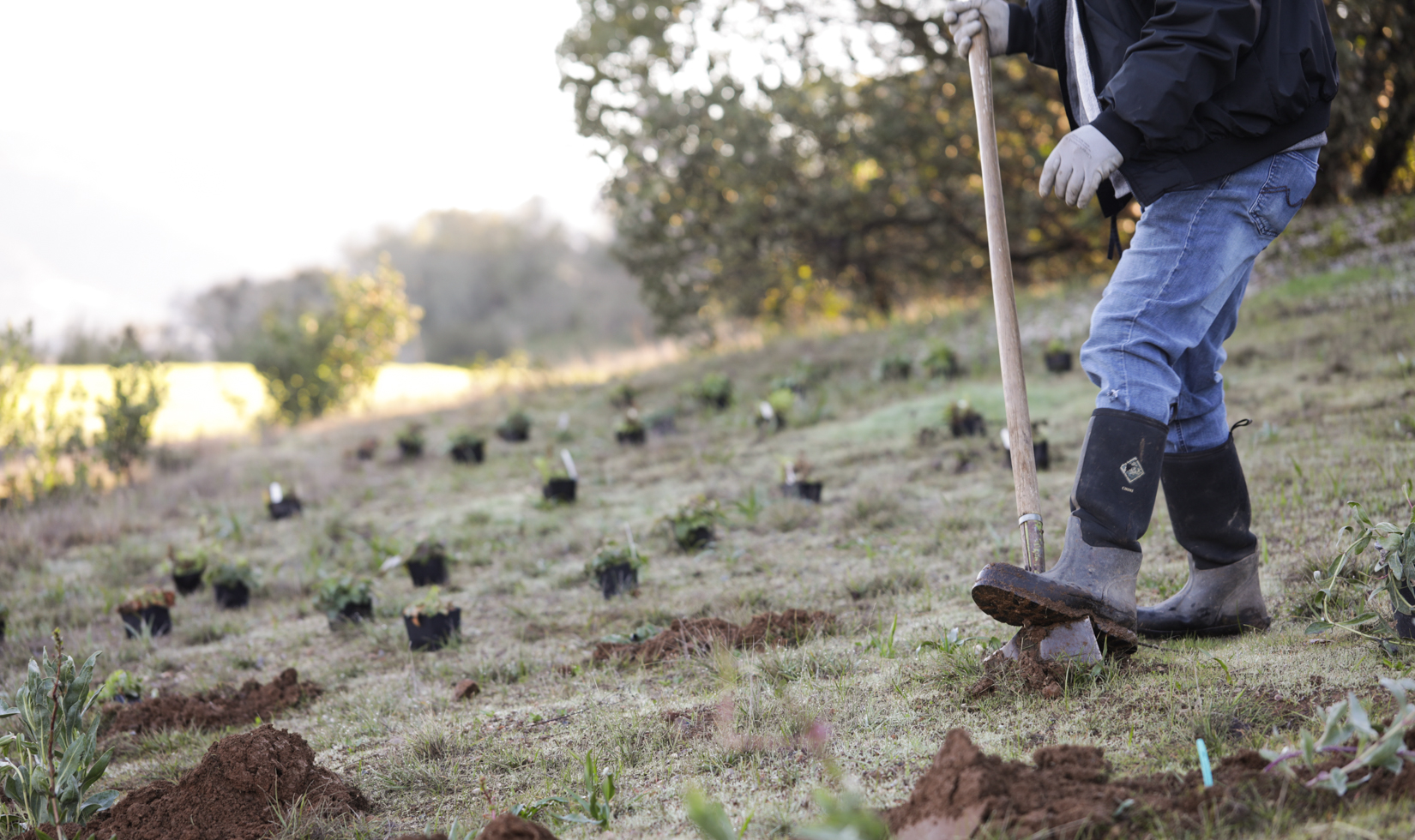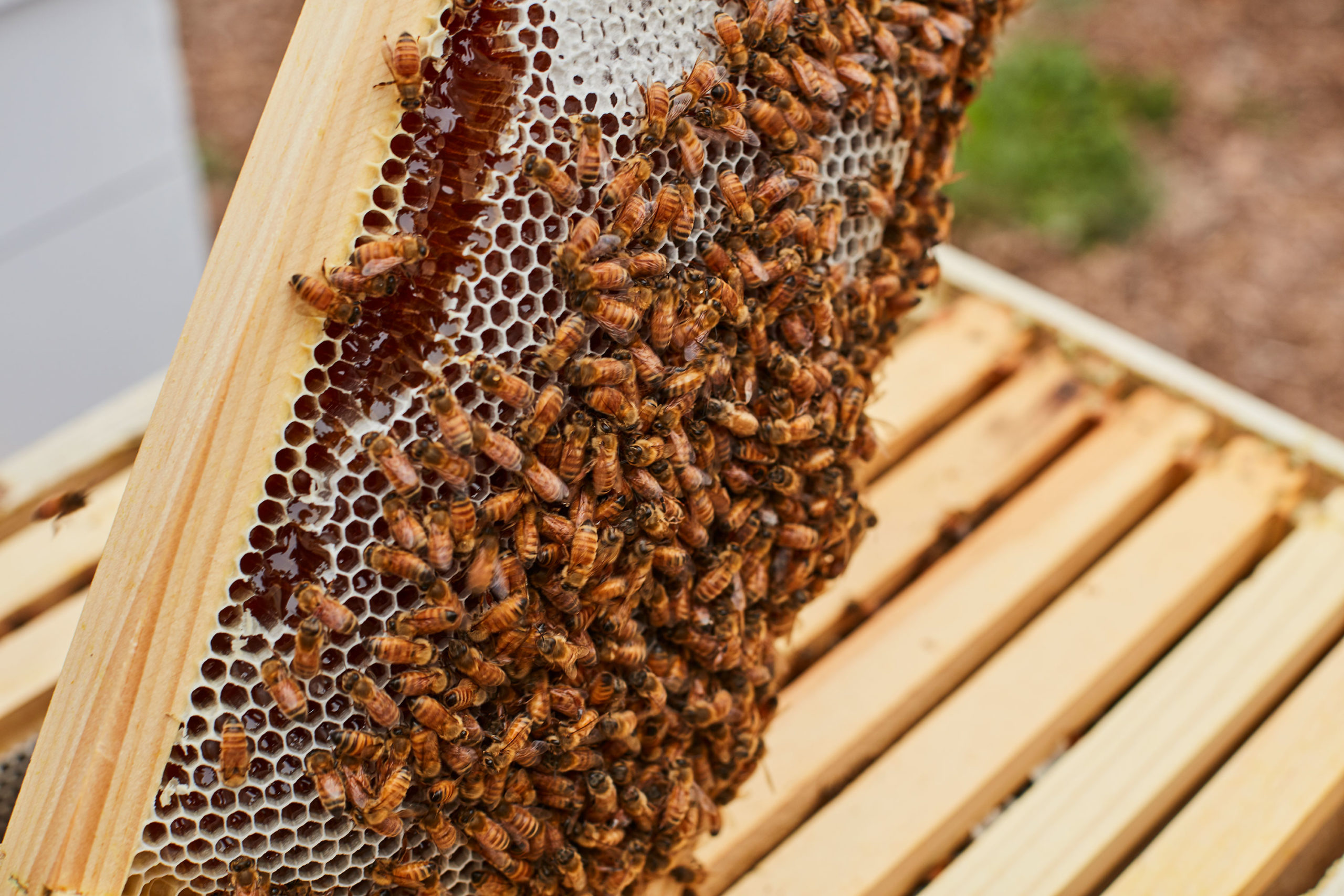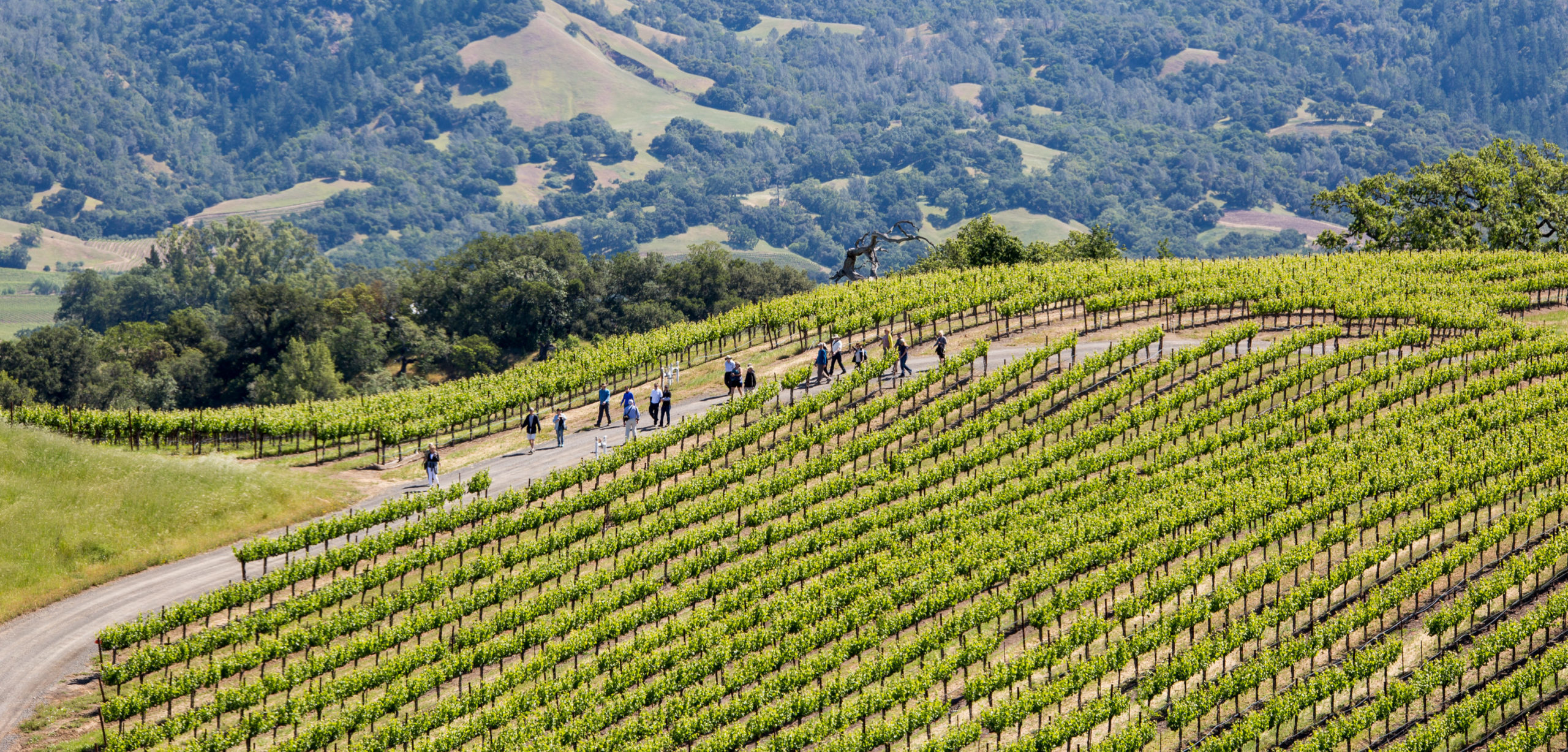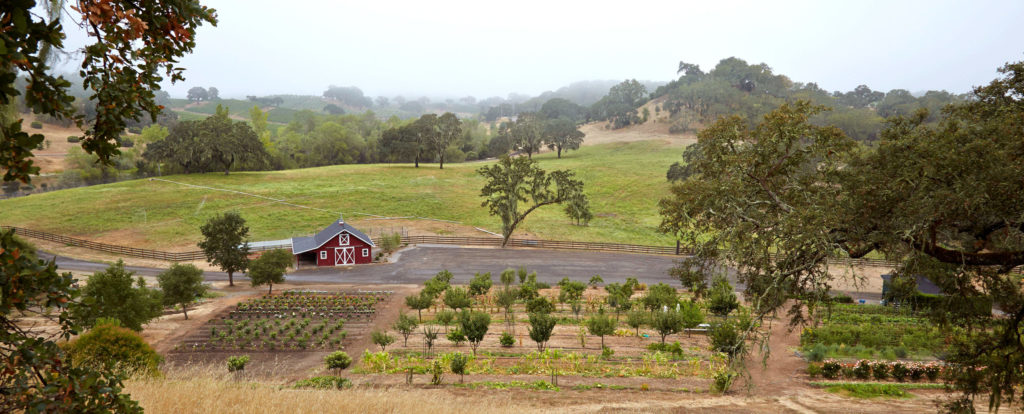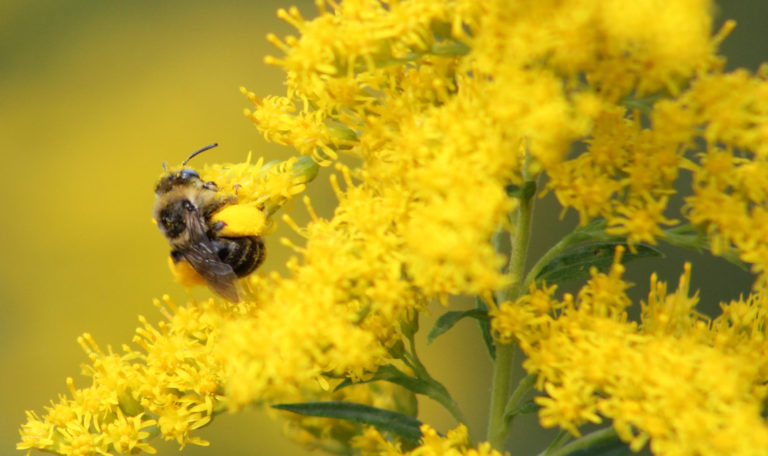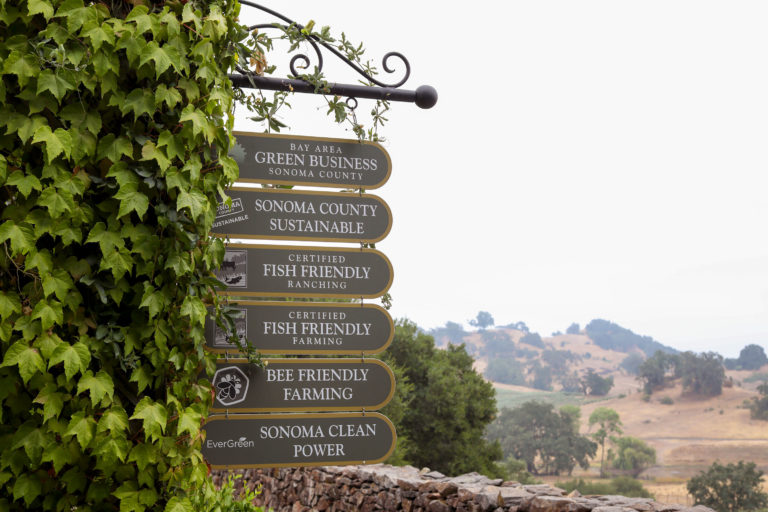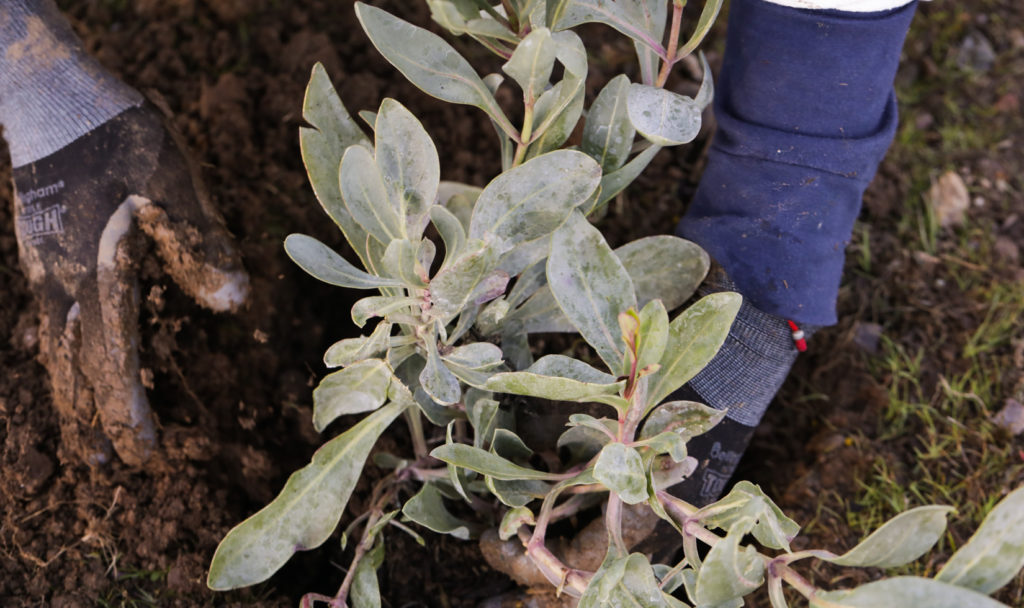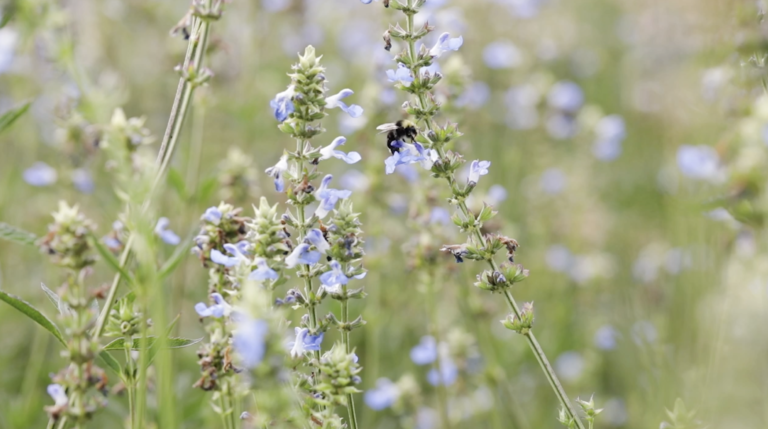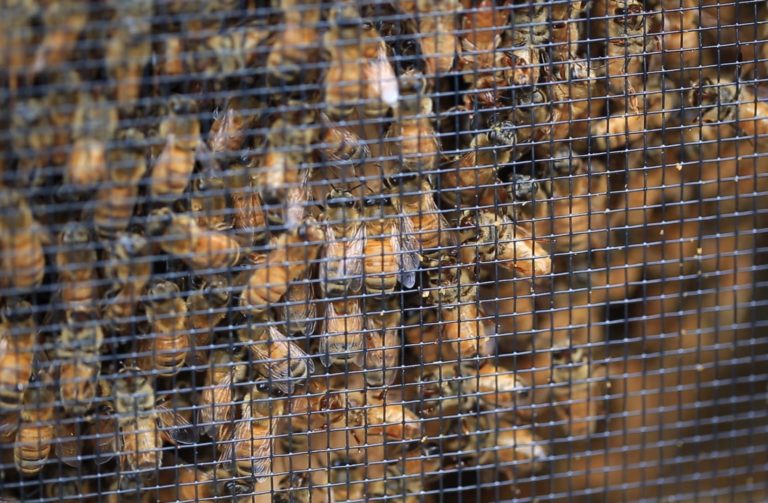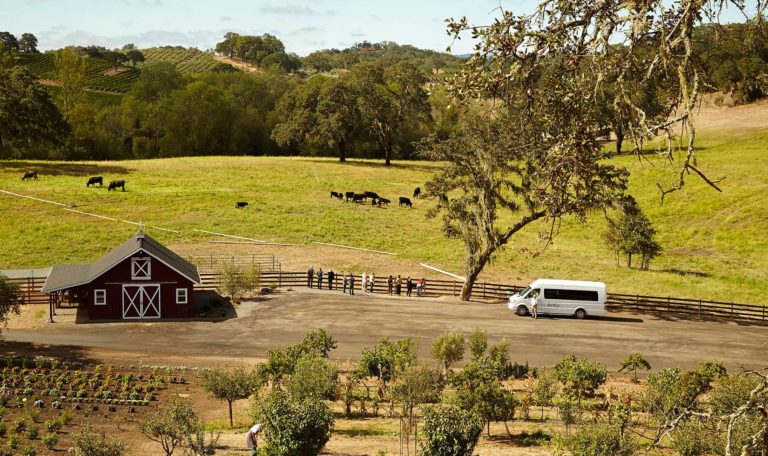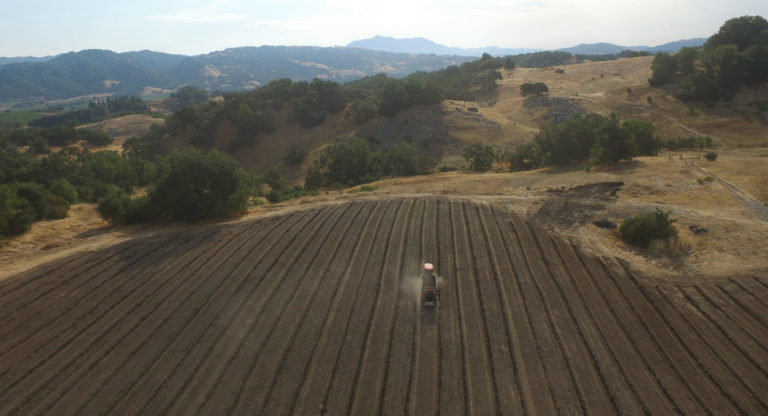We’ve been surprisingly busy at Jordan the last 12 months. During the pandemic, we tackled six interior design projects and one excitingly large and complex sustainability project: a multi-year pollinator sanctuaries program. Over the next three years, Jordan Winery is turning 10 acres of non-native grassland into preserved habitat for vital pollinators, including the at-risk Western Monarch butterfly, native bees and other insects. Jordan Estate, which is located on the migratory route for the Western monarch butterfly, will unveil its first eight acres of newly planted and seeded habitat this spring. According to Pollinator Partnership, Jordan Winery has become the largest dedicated pollinator habitat of all Bee Friendly Farming-certified vineyards nationwide. Here’s the story behind how our latest land conservation project came about.
Discovering Pollinator Sanctuaries Support
A few years ago, Todd Knoll, our executive chef, received an email from Pollinator Partnership, the world’s largest non-profit dedicated exclusively to the protection and promotion of pollinators and their ecosystems. The staff at Pollinator Partnership had heard about our 1,200-acre ranch, most of which is preserved open space, as well as our permanent and seasonal apiaries for honeybees. They asked if we’d like collaborate on promoting their annual Pollinator Week in June as part of our summer vineyard hikes. Once we learned more about the organization’s services, such as helping landowners create pollinator sanctuaries on their properties, we knew that the relationship would blossom into more than promoting an annual event.
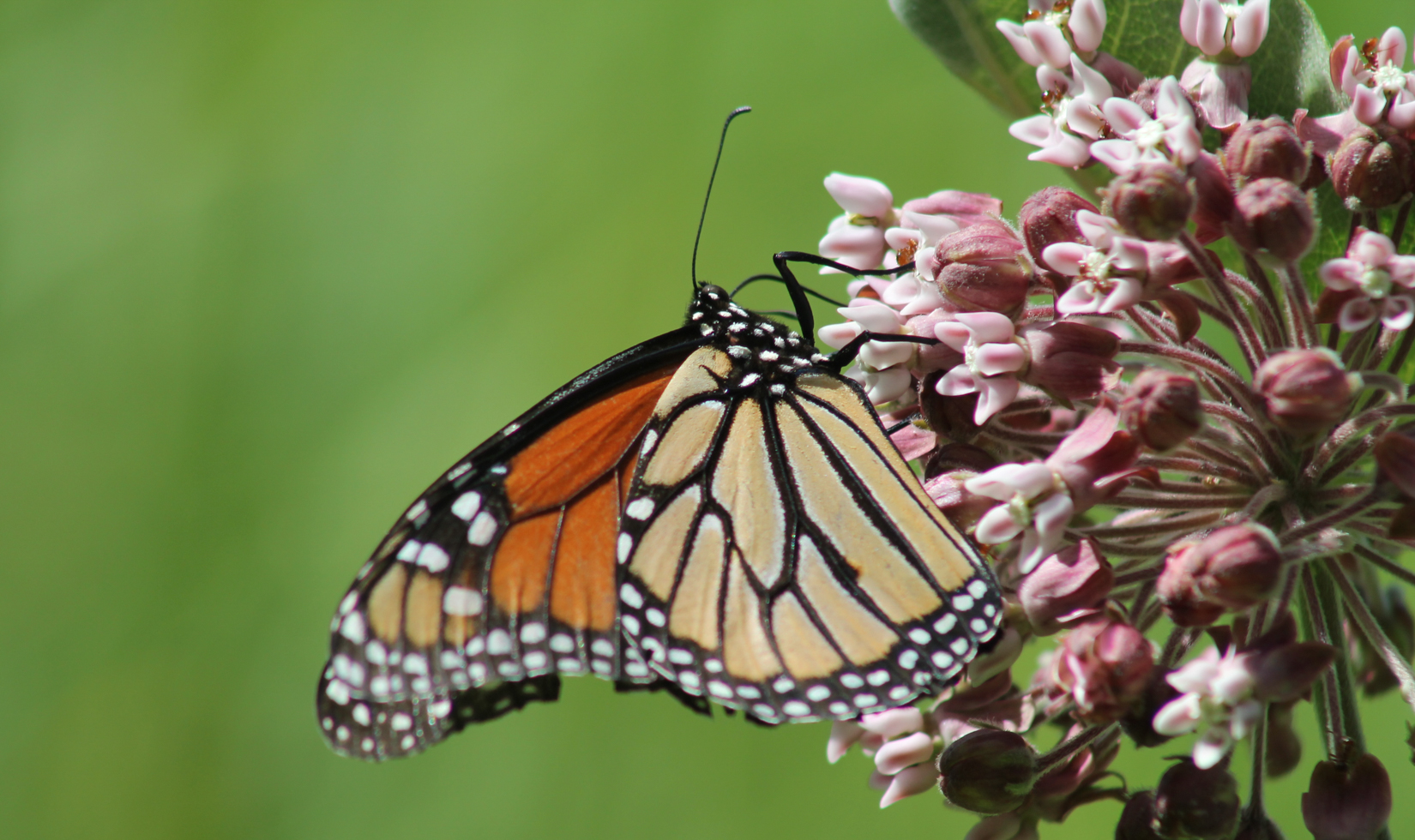
Helping the Western Monarch Butterfly
Recently, the annual migration of the Western monarch butterfly has made international headlines because of the tragically low population counts, which are recorded every December during the native pollinators’ travels down the West Coast of the United States to Baja California in Mexico. According to The Xerces Society in 2020, the western monarch butterfly “that winters along the California coast hit a low of [only 1,914] butterflies—a 99.9 percent decline since the 1980s.” Unfortunately, this critically low butterfly count follows two years with fewer than 30,000 butterflies, which were the previous record lows, indicating that the Western monarch butterfly is in peril. Climate change, loss of habitat from massive wildfires and urban development have all been noted as culprits that are bringing this wonderful insect to the brink of extinction.
After reading the news headlines in 2019, John Jordan, our chef, our ranch manager and myself got together and started talking about what we could do to help. We wanted to do our part as stewards of a sustainably certified estate winery with hundreds of acres of open space that welcomes full-time and seasonal winged residents. The Jordan garden is home to many permanent honeybee hives, and traveling honeybees have been wintering at Jordan since the 1990s. We contacted Pollinator Partnership and told them we were ready to take our pollinator husbandry to the next level.
Building the Pollinator Sanctuary Plan
To help save the monarchs, one plant holds the key–milkweed. Monarch caterpillars feed exclusively on milkweed leaves. Without this plant, they cannot complete their metamorphosis into butterflies, and their populations decline.
If you know John Jordan, you know he loves to build things–and the concept of cutting corners is not in his DNA. Sure, we could have created a few tiny pollinator habitats near the garden or the chateau where guests could access them easily. But how much of an impact would that really make on pollinator populations? During an on-site meeting with the pollinator experts, we toured the entire estate with the hopes of finding the perfect sites for future pollinator sanctuaries. We also hoped that these sanctuaries to be located near our Vineyard Hikes and Estate Tour & Tasting routes, so that guests could see them someday. By the end of the meeting, eight different sites were earmarked. Some were up to three acres in size, so we knew this was going to be a huge project. Brent Young, who runs the ranch, and John decided to approach the project as a multi-year program, and where a few locations would serve as pilot experiments. From there, we could learn what works and what doesn’t, so we can have the highest rate of success for the program. Over the course of a year, Brent worked with Pollinator Partnership staff to fine-tune the optimal sites and materials needed to create the pollinator sanctuaries. Plants were then selected based on terrain, sun exposure, proximity to watersheds, and most importantly, which pollinators each habitat will ultimately support, including native bees, honeybees, hummingbirds and butterflies. This winter, we began planting and seeding. Blooms from seed are expected to take approximately three years to emerge and begin attracting pollinators. The winery expects around 10 acres to be dedicated to pollinator sanctuaries total over three years.
More than 3,400 plants from 100 species are in the process of being planted on the four initial Jordan Estate pollinator sanctuary sites totaling eight acres in 2021, and the first plantings occurred in late February and early March. Of these, approximately 600 milkweed plugs were planted to support monarchs. About 200 pounds of wildflower seeds, including milkweed, were sowed this winter. Milkweed is a very expensive–and challenging–plant to grow. It takes a lot of work to successfully germinate milkweed. You can’t just throw the seeds in the ground and water them. Milkweed seeds need cool, consistent temperatures for a set number of days to grow. That’s why we are also working with Warm Springs 4-H in Healdsburg on a milkweed germination project this spring to grow up to 1,000 seedlings for planting in May. Native grasses, annual and perennial wildflowers, scrubs and trees were integrated into the sanctuaries as well to provide year-round floral resources and nesting habitats for native pollinators.
Helping Other Native Pollinators
Even though the plight of monarchs and honeybees have been dominating the news in recent years, other native pollinators are also struggling. According to BiologicalDiversity.org, population declines are occurring in 52 percent of native bee species. Natives, such as bumblebees and mason bees, are vital pollinators for plants grown in the Jordan Winery garden, such as tomatoes, squash, raspberries and strawberries, to name a few. Although bees do not pollinate the flowers on grapevines, they are the primary pollinators for cover crops grown between the vines, which naturally replenish important soil nutrients.
Until I started writing about pollinators for the Jordan Winery blog and our website, I didn’t realize that mason bees pollinate many of the fruits and vegetables we eat—with a 95 percent pollination rate compared to honeybees at 5 percent. Native bee homes have been welcoming these important insects to the Jordan garden for many years, but we are excited to give them more flowers to forage. Of the four pollinator sanctuaries created at Jordan this year, one is planted specifically with plants for native bees, one for hummingbirds, and two for monarchs and other butterflies.
Visiting the Jordan Pollinator Sanctuaries
Guests will be able to see these young pollinator sanctuaries first-hand when the winery reopens for a series of Vineyard Hikes in honor of Earth Week, April 22-25. (Because the plants are tiny and young, there are no blooms yet, so you get to see the habitat in its infancy before it is mature and full of flowers and insects.) Tickets for the four-mile hike, which includes a seated charcuterie picnic lunch, salad from the chef’s garden and wine pairing, are $110 per person and go on sale on April 7 on our website. The Estate Tour & Tasting, a moveable feast for the senses from May through October that transverses the ranch, also passes these pollinator habitats.
I asked our friends at Pollinator Partnership for a quote for our press release, and this is what they had to say.
“This is the most diverse pollinator habitat restoration program that we know of,” said Miles Dakin, Bee Friendly Farming coordinator for Pollinator Partnership. “The initiative shown by Jordan Estate is remarkable, and we are proud to have them as a Bee Friendly Farming Certified Member.”
Through these plantings, John Jordan hopes that we will inspire more landowners across the West to plant milkweed and spread awareness about the importance of protecting native pollinators. These butterflies currently have no endangered species protections, neither at the state or federal level, but the proposed Monarch Act, which was announced last week, hopes to change that.
The beauty of diversified agriculture is how far it spans in multiple directions in support of the overall ecosystem, from caring for cattle and honeybees and farming grapes to growing vegetables. Although these pollinators don’t have a direct impact on lifecycle of grapevines, creating more habitat for them is a natural extension of our approach to biodiversity at Jordan Estate.
The Jordans have been rescuing animals here for forty-plus years–stray dogs, wild boar, goats, swans–and giving them a happy home at Jordan Estate. The time had come to provide a safe refuge for the insects that need it most.
